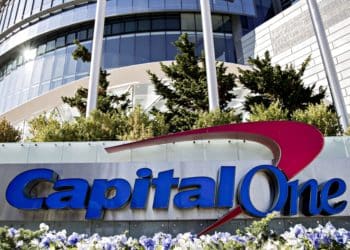11 Executives Offer Predictions for 2018
From the expansion of mobility services to technology enhancements and continued depreciation of used-car values, a lot has been stirring in the auto finance space this year.
And even more change is anticipated next year, according to some executives in the auto finance sector.
Auto Finance News asked eleven executives, “What are your predictions for auto finance in 2018?” The following are edited excerpts from their responses:

Mike Groff, President and Chief Executive, Toyota Financial Services
- “The industry will continue to face challenges in the form of rising interest rates and the impact of a growing supply of used vehicles driven, in part, by lease returns. Each lease return presents retention and conquest opportunities, ensuring a competitive environment throughout the course of the year.”
- “The expansion of mobility services will accelerate as finance entities identify new ways to participate in this market.”
- “Technology enhancements in fintech, artificial intelligence, and process automation will introduce a range of new opportunities, necessitating careful evaluation and investment decisions.”

Andrew Stuart, President and Chief Executive, TD Auto Finance
- “TD Auto Finance has done a great job at deepening and growing our relationships with existing dealer customers. We remain true to the TD risk culture as we take on more used-car volume and dip deeper in the credit pool by lending to more prime and near-prime borrowers. In 2018, we will continue to pursue this strategy while navigating emerging trends including manufacturers’ investment in electric vehicles, the uptick in fintech startups, light-vehicle sales, and more.”
- “We also plan to attract new dealer customers with our enhanced Priority Dealer Program [TD’s dealer rewards program] and deep industry expertise through our dedicated team of experts.”

Daniel Chait, President, Southeast Toyota Finance
- “Weakening overall used-car values will motivate captive finance companies to react, lowering new-car residual values, which will lead to a continued decline of lease penetration levels.”
- “Bucking the trend, values of off-lease trucks and SUVs will remain strong and reward companies with a balanced product mix in their portfolios.”
- “New industry entrants will continue with significant investments, seeking to move the vehicle purchase process online. But more successful in 2018 will be dealers’ efforts to evolve the in-dealership sales process to significantly improve the customer experience.”

Joseph Pendergast, Vice President of Consumer Lending, Navy Federal Credit Union
- “We expect 2018 to be another strong year for the auto industry. The average age of vehicles on the road today is nearly 12 years, meaning drivers will need replacements. If employment and consumer confidence remain strong, drivers will be replacing those older vehicles.”
- “To add to that, technology advancements in the mobile space are making the car-buying process faster and more efficient. We’ll soon be at a point where the preferred way for consumers to buy a car will be to select their vehicle, negotiate the price, and get approved for financing — all from their mobile device.”

Charles Jones, Head of National Indirect Lending, SunTrust Banks
- “Dealer incentives will increase to help maintain new-car sales in the 17 million to 17.2 million unit SAAR range in 2018.”
- “Used-car values will decline modestly in 2018, but still be above historical averages.”
- “The EV market will remain dependent upon tax incentives. Values of first-generation EV units on the used market will see a significant reduction, due to new models and improvements in technology.”

Thomas Lazenby, SVP, Head of Dealer Financial Services and Direct Auto, Regions Dealer Financial Services
- “We will continue to find dealers that align with our values and that will provide high-quality loan production for our indirect auto loan portfolio. We will be entering into select new markets in 2018 to facilitate loan growth. We will continue to develop new products and services to meet the evolving needs of our dealer partners.”
- “New-auto sales in 2018 will experience limited incremental growth, as compared to 2017. We expect dealers to continue to place more emphasis on used-vehicle sales and fixed operations (parts and service) as they produce higher profit margins than new-vehicle sales.”
- “The ongoing convergence of disruptive technology and mobility trends will continue to accelerate the product development cycle for manufacturers in 2018. We are optimistic that this will create more demand for new vehicles sales. In 2018, we will continue to seek market disruptor partners.”

Richard Hyde, Chief Operating Officer, Prestige Financial Services Inc.
- “Depressed values in the used-car market will continue to affect loss severity, but the values will flatten over the coming year, rather than decline at a steep rate.”
- “Lenders, including Prestige, will begin to see slow, but steady, growth in the portfolio, as loss trends stabilize through the summer months.”
- “Lenders will use more alternative data sources to sharpen scorecard precision in order to compete in the subprime marketplace. Those that are not exploring alternative data are at risk of falling behind and losing marketshare in 2018 and beyond.”

Troy Cavallaro, Chief Executive, Pelican Auto Finance LLC
- “A continued pull-back by larger scale subprime players and focus on their higher-end business.”
- “I expect higher than usual M&A activity. Private equity and institutional investors have been sitting on the platforms for five to seven years with very little movement.”
- “Margins and returns on assets will begin to improve as competition begins to slim, and larger participants tighten.”


Amy Martin, Senior Director of U.S. Structured Finance, and Jennie Lam, Director of U.S. Structured Finance, S&P Global Ratings
- “Prime credit performance will likely remain strong, however, lower recovery rates could put some upward pressure on losses. Recovery rates will likely be negatively impacted by lower used-vehicle values, which are expected to decline 3% to 5% next year.”
- “Subprime auto loan ABS credit performance will continue to be issuer-specific. Several lenders have tightened their credit standards, however, we have not yet seen widespread meaningful or sustained improvement in credit metrics.”
- “We expect continued consolidation in the subprime auto loan ABS sector. This sector is ripe for consolidation given that several companies are continuing to report operating losses and the competitive landscape has made it difficult for them to achieve meaningful returns.”

Georg Bauer, Co-Founder, Fair
- “My overarching prediction for 2018 is that the threats to the status quo posed by ridesharing, car-sharing, and autonomous vehicles — as well as new interpretations of the concept of ownership — will compel incumbents in auto finance to get serious about undertaking the kind of digital transformation we’ve seen across other industries. The initial spark for this innovation will be a very practical one: to find new ways to process the unprecedented number of used cars that will begin pouring into the market in 2018. Expecting to handle this volume only through traditional methods is neither realistic nor beneficial — for dealers or consumers.”
- “We are also going to see a continued proliferation of digital tools for consumers to improve and streamline the ways they shop, pay for, and drive cars. Innovations in auto finance will bring the auto transaction in line with other commercial interactions that are flexible, digital, and free from long-term commitment.”
- “While the dealership model will remain viable, it will face continuing pressure to address changes in consumer demands. The digital transformation under way in the auto industry will benefit dealers that evolve to meet this new digital paradigm, who will be well-positioned going forward and realize an entirely new revenue stream through fulfillment of digital car purchases.”














